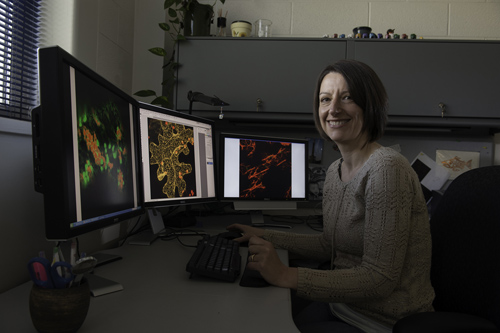EAST LANSING, Mich. — Humans could learn from how plants handle stress.
Federica Brandizzi, Michigan State University plant biologist, is using a grant from the National Institutes of Health to study how plants overcome stress as they grow. These pathways used to overcome stress are a key to growth. Without them plants, and animals, would die.
“When cells grow, they undergo trauma as growth is quite stressful,” Brandizzi said. “Since it’s very likely that these pathways have much in common between humans and plants, we should be able to gain insights into how plants and animals overcome stress and continue to grow as well.”
Inside cells are organelles that communicate with the nucleus. When the organelles involved in building important cell materials and in talking with the external environment need protein, they signal to the nucleus to send it their way. Growth stops when this signaling doesn’t happen. One key master regulator of this process is governed by a multifunctional protein called IRE1.
To better study the pathway’s impact on growth, Brandizzi isolated Arabidopsis mutants without a fully functional IRE1 pathway. These mutant plants offered excellent insight into how larger organisms endure and survive growth stress. Using plants is economically appealing compared to mutant animal models and bypasses testing on animals, Brandizzi said.

Federica Brandizzi, MSU plant biologist, demonstrates that humans could learn from how plants handle stress. Photo by Kurt Stepnitz.
The interdisciplinary project could lead to improving plants’ growth potential and allow more crops to be planted on smaller plots of land. It could also lead to advances in human medicine as well.
“Our results will contribute to our understanding of limiting factors in agricultural processes and plant biotechnology designed to sustain food security,” Brandizzi said. “Plants are the proverbial canaries in the coal mine, so they also will enhance our understanding of human growth and disease.”
*Source: Michigan State University
